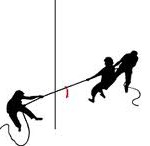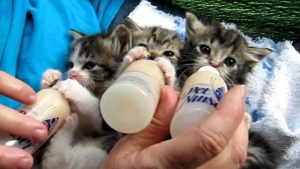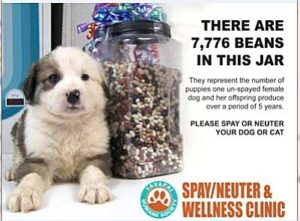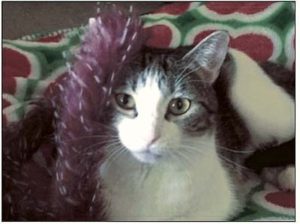 Every year every community decides to wreak massive mayhem among our companion animals. If you’re a pet owner, you know I’m talking about the Fourth of July. Fireworks terrify pets.
Every year every community decides to wreak massive mayhem among our companion animals. If you’re a pet owner, you know I’m talking about the Fourth of July. Fireworks terrify pets.
A terrified pet will spare no effort to escape the sound and fury of this raucous holiday. Sounds that are just loud to us humans are actually painful to our pets. Pets don’t react to fireworks just because they are loud – they react because they are painful.
Dogs hear sounds and detect frequencies up to 60,000cps (60 kHz), compared to our human capacity of up to 20,000cps (or 20kHz). Cats have even more sensitive hearing than dogs (64kHz).
Pets who are normally calm and obedient can present unpredictable behavior when afflicted with the startling pain caused by the noise of fireworks. Dogs and cats can become frightened or confused by the excitement and physical discomfort caused by the loud noises of the holiday. In the days following the Fourth of July, animal shelters are filled with pets who have chewed through tethers, jumped through plate glass windows or over fences, and escaped “secure” enclosures in a hopeless attempt to escape the terror and pain of fireworks.
Dogs attempting to flee the frightening and hurtful noises of the fireworks can lose their sense of direction and run long distances, risking injury or death as they dart in and out of traffic.
Veterinary visits skyrocket following the Fourth of July and animal shelters overflow with lost and bewildered pets. The loud noises from traditional fireworks can cause heart problems, nausea, and even panic attacks in our pets. Animal shelter employees and volunteers spend many days and hours following this holiday comforting traumatized pets while we try to find their “lost” owners.
As a pet-loving nation I wonder if we should consider sparing our four legged companions the unnecessary suffering that comes from exposing them to the noise of fireworks. Before you say there is no possible way to celebrate this holiday without loud noises, consider Collecchio, Italy.
Collecchio’s town council enacted a law specifically designed to reduce the fear that fireworks cause their non-human populations. The law requires fireworks to be silent. They found that the silent fireworks significantly reduced the stress that loud fireworks cause animals – and not just pets, but wildlife and farm animals too. A company called Setti Fireworks, located in Genova, Italy, makes silent explosives for the town of Collecchio – and they claim they can customize silent fireworks for any event – private or public.
Isn’t it time for America to follow this humane example to reduce the stress and pain fireworks cause our pets, wildlife and farm animals?
Source: Yavapai Humane Society advocates for silent fireworks

 Your pet has a deadly enemy that comes in the form of several species of grassy weeds that grow rapidly during the winter/spring rains. When these grasses mature a seed forms at the top of the stalk resembling a fox tail.
Your pet has a deadly enemy that comes in the form of several species of grassy weeds that grow rapidly during the winter/spring rains. When these grasses mature a seed forms at the top of the stalk resembling a fox tail. Foxtail seeds are relatively small, so detecting them after they enter a dog’s body can be difficult. Veterinarians usually rely on telltale symptoms such as head-shaking, paw licking, swellings on the body, or sudden and continuous sneezing. Foxtails in the ears, nose and eyes are serious and can ultimately be life-threatening if not treated promptly.
Foxtail seeds are relatively small, so detecting them after they enter a dog’s body can be difficult. Veterinarians usually rely on telltale symptoms such as head-shaking, paw licking, swellings on the body, or sudden and continuous sneezing. Foxtails in the ears, nose and eyes are serious and can ultimately be life-threatening if not treated promptly. These are challenging times for government officials. In many communities the care of lost and homeless animals can be complicated by a host of competing priorities. When evaluating conflicting priorities it’s easy to look to the bottom line. When that happens, questions of compassion can be overlooked.
These are challenging times for government officials. In many communities the care of lost and homeless animals can be complicated by a host of competing priorities. When evaluating conflicting priorities it’s easy to look to the bottom line. When that happens, questions of compassion can be overlooked. Each spring animal shelters receive many kittens too young to survive more than an hour or two without a mother. These kittens are called “neonates.” Sadly, most of the neonate kittens that shelters takes in are orphans. People find these babies in their garage, barn, flowerbeds and many other places where the mother felt safe from predators and intruders while she gave birth.
Each spring animal shelters receive many kittens too young to survive more than an hour or two without a mother. These kittens are called “neonates.” Sadly, most of the neonate kittens that shelters takes in are orphans. People find these babies in their garage, barn, flowerbeds and many other places where the mother felt safe from predators and intruders while she gave birth. The New York Times recently (May 7) ran a piece by Jessica Pierce asking the provocative question “
The New York Times recently (May 7) ran a piece by Jessica Pierce asking the provocative question “



